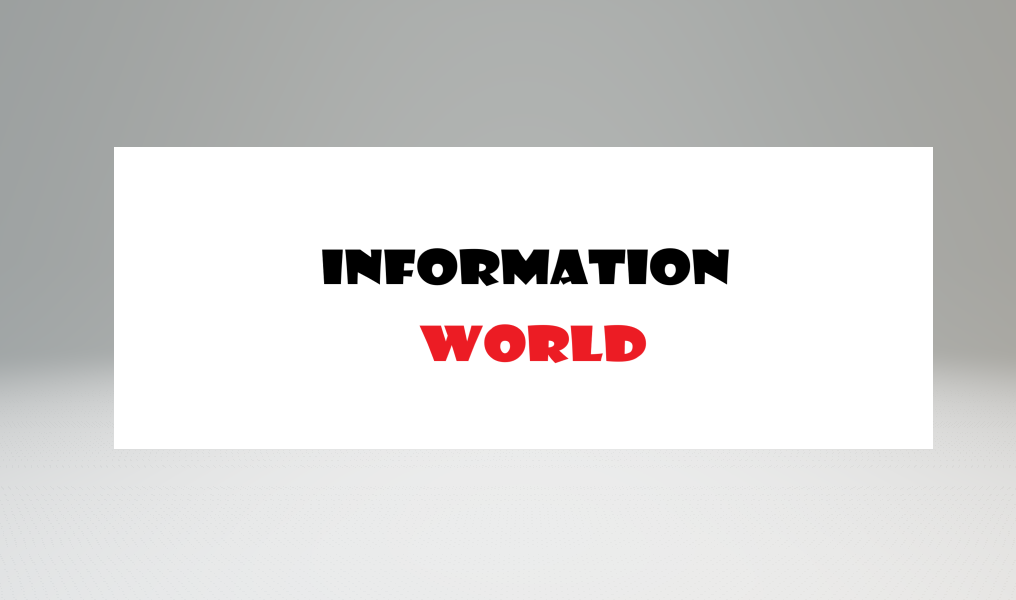Introduction
Information Technology (IT) has become an integral part of modern society, reshaping the way we live, work, and communicate. Over the years, IT has undergone rapid evolution, fueling advancements across various industries and enabling unparalleled connectivity. In this article, we will delve into the multifaceted world of information technology, exploring its historical roots, present trends, challenges, and groundbreaking innovations.
I. Historical Roots and Evolution of Information Technology
The origins of information technology can be traced back to the early civilizations' efforts to convey messages over distances using smoke signals, drum beats, and semaphore systems. However, the true revolution in IT began with the invention of the telegraph in the 19th century, marking the first instance of electrical communication. The subsequent decades witnessed the development of computers, with pioneers like Charles Babbage and Ada Lovelace laying the theoretical groundwork for modern computing.
Early Computing Devices and the Birth of Computers
- Analytical Engine: Charles Babbage's visionary concept.
- Ada Lovelace's contributions to computer programming.
- Emergence of punch card systems and mechanical calculators.
Electronic Computing Era
- ENIAC: The first general-purpose electronic computer.
- Transistors and integrated circuits: Revolutionizing hardware design.
- Mainframes and mini-computers: Enabling large-scale data processing.
II. Current Trends in Information Technology
The landscape of information technology is constantly evolving, driven by emerging technologies and shifting paradigms. Several trends are shaping the present IT ecosystem, revolutionizing industries and societies alike.
Cloud Computing and Virtualization
- The rise of cloud computing models: IaaS, PaaS, SaaS.
- Benefits of cloud computing: Scalability, cost-effectiveness, and accessibility.
- Virtualization technology: Optimizing resource utilization.
Big Data and Analytics
- The explosion of data: Volume, velocity, variety, and veracity.
- Data analytics and business intelligence: Extracting insights for decision-making.
- Machine learning and AI: Automating data analysis and pattern recognition.
Internet of Things (IoT)
- Connecting the physical world: Smart devices, sensors, and actuators.
- IoT applications: Smart cities, industrial automation, healthcare monitoring.
- Challenges of IoT: Security, privacy, and interoperability.
Cybersecurity and Privacy
- Growing cyber threats: Hacking, data breaches, and ransomware attacks.
- Importance of cybersecurity measures: Encryption, authentication, and intrusion detection.
- Protecting user privacy: Legal and ethical considerations.
Artificial Intelligence and Automation
- AI applications: Natural language processing, image recognition, autonomous vehicles.
- Robotic process automation (RPA): Streamlining repetitive tasks.
- Societal impact of automation: Job displacement and skills retraining.
III. Challenges in Information Technology
While information technology has brought about remarkable advancements, it also faces a multitude of challenges that must be addressed to ensure a sustainable and secure digital future.
Cybersecurity Threats and Vulnerabilities
- Evolving cyber threats: Advanced persistent threats (APTs), zero-day vulnerabilities.
- Social engineering and phishing attacks: Exploiting human psychology.
- Importance of proactive cybersecurity measures.
Data Privacy and Ethics
- Data breaches and privacy violations: Implications for individuals and businesses.
- Regulatory frameworks: GDPR, CCPA, and global data protection standards.
- Ethical considerations in AI and machine learning: Bias, transparency, and accountability.
Digital Inclusion and Accessibility
- The digital divide: Disparities in internet access and digital literacy.
- Ensuring digital inclusion: Bridging the gap through education and infrastructure.
- Accessibility in design: Making technology usable for all, including people with disabilities.
Technological Obsolescence and E-Waste
- Rapid pace of technological advancement: Short lifecycle of devices and software.
- Electronic waste (e-waste) crisis: Environmental impact and sustainability concerns.
- Strategies for responsible consumption and disposal.
IV. Innovations Shaping the Future of IT
The future of information technology holds promises of revolutionary innovations that have the potential to reshape industries and societies on a global scale.
Quantum Computing
- Quantum bits (qubits): Leveraging superposition and entanglement for computation.
- Potential applications: Cryptography, optimization, drug discovery.
- Overcoming challenges: Noise reduction, error correction, and scalability.
Edge Computing
- Decentralizing data processing: Performing computations closer to data sources.
- Reduced latency and improved performance: Crucial for real-time applications.
- Use cases: IoT, autonomous vehicles, augmented reality.
5G and Beyond
- The fifth generation of wireless technology: Enhanced speed, capacity, and connectivity.
- Enabling transformative technologies: IoT, remote surgery, immersive experiences.
- Building the infrastructure: Challenges and global rollout.
Biotechnology and IT Convergence
- Bioinformatics: Analyzing biological data through IT tools.
- Personalized medicine and genomics: Tailoring treatments based on genetic information.
- Ethical implications: Privacy, genetic discrimination, and informed consent.
Conclusion
Information technology has come a long way from its humble beginnings, transforming the world in ways unimaginable just a few decades ago. The current trends and challenges in IT are driving us towards an era of unprecedented connectivity, innovation, and societal impact. As we navigate the complexities of cybersecurity, data privacy, and digital inclusion, we must also embrace emerging technologies like quantum computing and biotechnology to shape a future where IT enriches lives while maintaining ethical and sustainable practices. The journey of information technology continues to unfold, and its influence on humanity is destined to remain a focal point of our ever-evolving world.



0 Comments